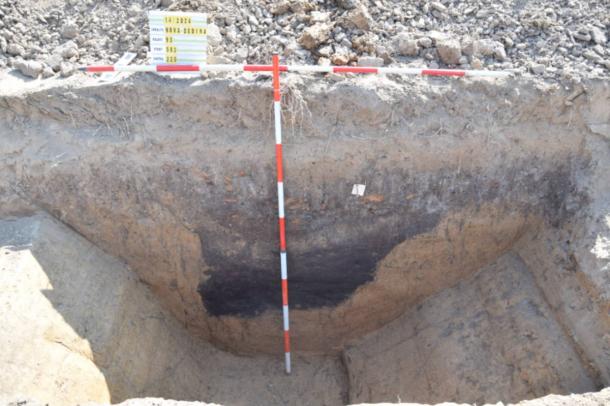🔴 Website 👉 https://u-s-news.com/
Telegram 👉 https://t.me/usnewscom_channel
Archaeologists in the Czech Republic have stumbled upon something quite incredible: remnants of a prehistoric housing estate inhabited by the earliest farmers of the Late Stone Age! Approximately 7,000 years ago, these early settlers established themselves in an area where bountiful and fertile soil provided well for agriculture, and so they built their settlement on a slight ridge above the Oskava River.
A Massive Longhouse
During a two-week rescue excavation at Nové Dědina near Uničov in the Olomouc region, led by archaeologist Mark Kalábek, from the Olomouc Archaeological Center, the team uncovered columnar pits that served as foundations for an above-ground structure known as a longhouse, which housed these early farmers. The house walls were reinforced with woven twine and coated with clay, reports a press release by the Olomouc Archaeological Center. They used a process that provided effective thermal insulation, creating a shelter for the entire community.
“We also found stock pits of cauldron or bag shapes, which were used, for example, to store crops. After the end of their use, the locals used them as waste pits,” stated Kalábek.
Cauldron shaped storage pit. (Nikola Orlitová/Olomouc Archaeological Center)
A Near Perfect Cremation
In the same area, archaeologists also discovered a cluster of five cremation graves from the Late Bronze Age, dating back to between 1200 and 1000 BC. These graves were associated with the Lusatian Urnfield culture (cremating the dead and placing their ashes in urns), and contained artifacts such as bronze needles, bracelets, and rings. The urns were often covered with additional vessels, like bowls, with other objects placed nearby.
“The cremation was done almost perfectly. Although the graves were disturbed by deep plowing, we managed to separate the shards from the urn and the remains of the deceased. We have recognized fragments of long bones and I can confirm that this is a cremation grave. At this time, people were able to burn the dead almost perfectly,” explained by anthropologist Lukáš Šín, who uncovered the graves in the field and transported them to the laboratory.
The artifacts will undergo laboratory analysis, conservation, and documentation at the Olomouc Archaeological Center.
Bronze jewelry found at the site. (Nikola Orlitová/Olomouc Archaeological Center)
The Lusatian Culture
The Lusatian Culture was a Bronze Age and early Iron Age society, which thrived from around 1200 BC to 500 BC across a broad region that now encompasses Poland, parts of the Czech Republic, Slovakia, eastern Germany, and western Ukraine. The culture is named after Lusatia, a region in modern-day eastern Germany (Brandenburg and Saxony) and western Poland, where many significant archaeological sites have been found, reports Heritage Daily.
Known for their distinctive pottery, burial practices, and settlement structures, the Lusatians left behind a rich archaeological record.
The Lusatian people developed a stable economy primarily centered on arable farming, cultivating cereals such as barley and wheat, and supplemented this with hunting, gathering, and limited animal husbandry. The settlement patterns, often near rivers or fertile plains, supported intensive agriculture, which became a staple of their way of life.
Archaeologists have also discovered numerous fortified settlements, suggesting that defense and community cohesion were important aspects of Lusatian society. Their burial rites were typically characterized by cremation and the use of urnfields, where cremated remains were placed in urns and buried in large communal cemeteries.
The longhouse was a distinctive type of dwelling used by the people of this culture, which flourished in Central Europe during the Late Bronze and Early Iron Ages, approximately from 1300 to 500 BC. The longhouses were rectangular, single-room structures, built with timber frames, clay walls, and thatched or sod-covered roofs.
Measuring around 20 to 30 meters (65.5 to 98.5 feet) in length, they housed extended families, livestock, and storage under one roof. The sturdy construction of longhouses provided good insulation and durability, essential for surviving harsh winters.
Lusatian longhouses reflected an efficient use of local resources and adapted well to the needs of agrarian communities. The layout of these houses within settlements suggests a strong communal structure, with groups of longhouses often clustered in villages and arranged in open or circular patterns.
In the Czech Republic, evidence of Lusatian longhouses has primarily been found in the eastern regions, where the culture’s influence was strongest, like this site, Nové Dědina.
Top image: Urn in the grave of the cremated Lusatian discovered in Nové Dědina near Uničov, Czech Republic. Source: Nikola Orlitová/Olomouc Archaeological Center
By Sahir Pandey
